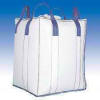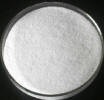| Anmol Chemicals is the pioneer manufacturers of Sodium Gluconate, Pharmaceutical Excipients Fragrance & Flavor chemicals in India. We offer Halal and Kosher Sodium Gluconate made in an ISO9001, ISO22000 (FSSC22000) cGMP and GLP certified facility. Our group has several manufacturing facilities spread across the world, supported by toll manufacturers and representatives in UAE, Europe, Africa, USA, China and has several associated manufacturing facilities spread across India. All the Information on Physics, Chemistry, Applications, Uses and Technology on Manufacture of Sodium Gluconate is in these pages. |
| The units have one or more of the certifications like FDA GMP, ISO 9001, ISO 22000, HACCP, REACH, Kosher & Halal |
Sodium Gluconate USP, Pure FCC Food Grade Manufacturers
Sodium Gluconate CAS Number 527-07-1, EINECS EC Number 208-407-7, HS Code 2918.16.2000**; Molecular Weight 218.14, Molecular Formula: C6H11NaO7
SDS GHS, MSDS Sheet of Sodium Gluconate Manufacturers
English Calcium Copper Magnesium Manganese Potassium Sodium Zinc Gluconate Gluconate Manufacturers
Arabic مصنعي غلوكونات الصوديوم
Spanish Gluconato de sodio Fabricantes
Portuguese Fabricantes de Gluconato de Sódio
French Fabricants de gluconate de sodium
Dutch Fabrikanten van natriumgluconaat
German Hersteller von Natriumgluconat
Italian Produttori di gluconato di sodio
Specifications of Sodium Gluconate USP Grade
C6H11NaO7 -- 218.14
d-Gluconic acid, monosodium salt.
Monosodium d-gluconate CAS Number 527-07-1
Sodium Gluconate contains not less than 98.0 percent and not more than 102.0 percent of C6H11NaO7.
Identification:
A: A solution (1 in 20) responds to the tests for Sodium.
B: It responds to Identification test B under Calcium Gluconate.
Chloride: A 1.0-g portion shows no more chloride than corresponds to 1 mL of 0.020 N hydrochloric acid (0.07%).
Sulfate: A 2.0-g portion dissolved in boiling water shows no more sulfate than corresponds to 1 mL of 0.020 N sulfuric acid (0.05%).
Lead: Dissolve 1.0 g in 25 mL of water: the limit is 0.001%.
Heavy metals: Dissolve 1.0 g in 10 mL of water, add 6 mL of 3 N hydrochloric acid, and dilute with water to 25 mL: the limit is 0.002%.
Reducing substances: Transfer 1.0 g to a 250-mL conical flask, dissolve in 10 mL of water, and add 25 mL of alkaline cupric citrate TS. Cover the flask, boil
gently for 5 minutes, accurately timed, and cool rapidly to room temperature. Add 25 mL of 0.6 N acetic acid, 10.0 mL of 0.1 N iodine VS, and 10 mL of 3 N hydrochloric
acid, and titrate with 0.1 N sodium thiosulfate VS, adding 3 mL of starch TS as the endpoint is approached. Perform a blank determination, omitting the specimen, and
note the difference in volumes required. Each mL of the difference in volume of 0.1 N sodium thiosulfate consumed is equivalent to 2.7 mg of reducing substances
(as dextrose): the limit is 0.5%.
Assay: Transfer about 150 mg of Sodium Gluconate, accurately weighed, to a suitable conical flask, and dissolve in 75 mL of glacial acetic acid, warming if
necessary to effect complete solution. Cool, add quinaldine red TS, and titrate with 0.1 N perchloric acid VS to a colorless endpoint. Each mL of 0.1 N perchloric acid
is equivalent to 21.81 mg of C6H11NaO7.
Sodium Gluconate FCC Food Grade Specifications
Sodium D-Gluconate
CH2OH(CHOH)4COONa
C6H11NaO7 Formula weight 218.14
CAS 527-07-1
DESCRIPTION
Sodium Gluconate occurs as a white to tan, granular to fine, crystalline powder. It is very soluble in water, and is sparingly soluble in alcohol. It is insoluble in ether.
Function: Nutrient; sequestrant.
REQUIREMENTS
Identification:
A. A 1:20 aqueous solution gives positive tests for Sodium.
B. Dissolve a quantity of sample in water, heating in a water bath at 60° if necessary, to obtain a Test Solution containing 10 mg/mL. Similarly, prepare a Standard
Solution of USP Potassium Gluconate Reference Standard in water, diluting to 10 mg/mL. Apply separate 5-L portions of the Test Solution and the Standard Solution on a
suitable thin-layer chromatographic plate coated with a 0.25-mm layer of chromatographic silica gel, and allow to dry. Develop the chromatogram in a solvent system
consisting of a mixture of alcohol, water, ammonium hydroxide, and ethyl acetate (50:30:10:10) until the solvent front has moved about three-fourths of the length of
the plate. Remove the plate from the chamber, and dry at 110C for 20 min. Allow to cool, and spray with a spray reagent prepared as follows: Dissolve 2.5 g of ammonium
molybdate in about 50 mL of 2 N sulfuric acid in a 100-mL volumetric flask, add 1.0 g of ceric sulfate, swirl to dissolve, dilute to volume with 2 N sulfuric acid, and
mix. After spraying, heat the plate at 110C for about 10 min. The principal spot obtained from the Test Solution corresponds in color, size, and Rf value to that obtained
from the Standard Solution.
Assay: Not less than 98.0% and not more than 102.0% of C6H11NaO7.
Lead: Not more than 2 mg/kg.
Reducing Substances: Not more than 0.5%, calculated as D-glucose.
TESTS
Assay: Transfer about 150 mg of sample, accurately weighed, into a clean, dry 200-mL Erlenmeyer flask, add 75 mL of glacial acetic acid, and dissolve by heating
on a hot plate. Cool, add quinaldine red TS, and using a 10-mL microburet, titrate with 0.1 N perchloric acid in glacial acetic acid to a colorless endpoint. Each
milliliter of 0.1 N perchloric acid is equivalent to 21.81 milligrams of C6H11NaO7. Caution: Handle perchloric acid in an appropriate fume hood.
Lead: Determine as directed for the Flame Atomic Absorption Spectrophotometric using a 10-g sample.
Reducing Substances: Transfer about 1 g of sample, accurately weighed, into a 250-mL Erlenmeyer flask, dissolve it in 10 mL of water, add 25 mL of alkaline cupric
citrate TS, and cover the flask with a small beaker. Boil gently for exactly 5 min, and cool rapidly to room temperature. Add 25 mL of a 1:10 solution of acetic acid,
10.0 mL of 0.1 N iodine, 10 mL of 2.7 N hydrochloric acid, and 3 mL of starch TS,
and titrate with 0.1 N sodium thiosulfate to the disappearance of the blue color.
Calculate the weight, in milligrams, of reducing substances (as D-glucose) by the formula 27(V1N1 − V2N2), in which 27 is an empirically determined equivalence
factor for D-glucose; V1 and N1 are the volume and normality, respectively, of the iodine solution; and V2 and N2 are the volume and normality, respectively, of the
sodium thiosulfate solution.
We also make Sodium Ascorbate, Sodium Formate, Sodium Glycerophosphate, Sodium Stibogluconate, Calcium Glubionate Manufacturers.
Aluminum Cobalt Ferrous Nickel Strontium Gluconate Manufacturers.
Calcium Magnesium Manganese Borogluconate Manufacturers.
You may visit Sodium Iodide page.
Sodium Gluconate Manufacturers:
Anmol Chemicals
S-8, SARIFA MANSION, 2ND FLANK ROAD, CHINCHBUNDER, MUMBAI 400009, INDIA
TEL: (OFFICE) 91-22-23770100, 23726950, 23774610, 23723564. FAX: 91-22-23728264
e-mail: anmolc@mtnl.net.in
Exports to USA, Canada, UAE, Dubai, South Africa, Tanzania, Kenya, Nigeria, Egypt, Uganda, Turkey, Mexico, Brazil, Chile, Argentina, Europe Netherlands, Italy, Spain, Germany, Portugal, France, Malaysia, Indonesia, Thailand, Russia, Georgia, Norway, Korea, Japan, etc.
Copyright and Usual Disclaimer is Applicable. 16 February, 2022




